|
Goals:
The
purpose of the visit was to introduce the two groups of
chimpanzees and to give recommendations regarding basic
husbandry routine and enrichment for all species.
| Group
1: |
Group
2 |
| Bobo
M; 18 years old |
Laoer
(No.2) M; 5 years old
|
| Mingming
F ; 13 years old
|
Laosan
(No.3) M; 4 years old
|
| Laoda
(No.1) F; 7 years old |
Laosi
(No. 4) F; 4 years old |
|
Laowu
(No.5) M; 3 years old |
|
Laoliu(No.6)
F ;3 years old
|
Chimpanzees
(Pan troglodytes ?) Subspecies Unknown.
Suggestions:
Subspecies needs to be determined by DNA testing.
Group
2
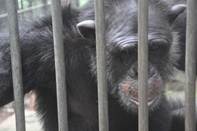 |
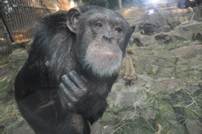 |
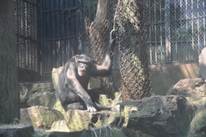 |
| Bobo
|
Mingming
|
No.
1(Laoda)
|
|
|
| Group 2 |
|
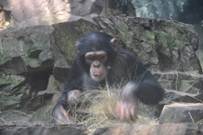 |
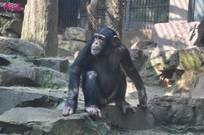 |
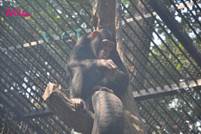 |
|
No. 2 (Laoer)
|
No.3
(Laosan) |
No.
4 (Laosi)
|
|
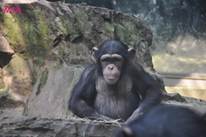
|
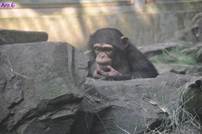 |
|
|
| No.5
LaowuNo.
|
6 Laoliu |
|
|
Chimpanzee
exhibits
The
tree chimpanzee exhibits were satisfactory in size although
one was not used due to possible escape of younger
chimpanzees.
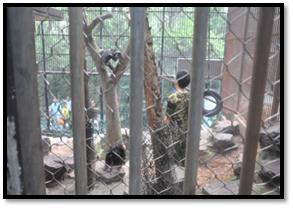
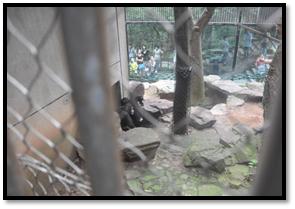
The night houses were large enough, made of concrete, glass
and metal; lacked most furniture (except wooden bench) and
substrate. Straw and paper was immediately added for nest
building and to take animals off of the unyielding surface.
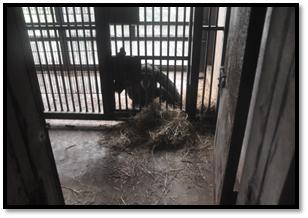 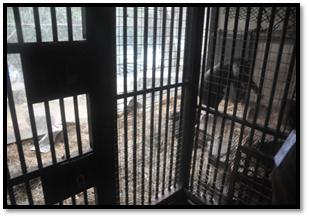
Suggestion:
To further improve quality, some flexible furniture needs to
be installed in each night quarters. Animals need both
flexible and permanent structures in order to exhibit proper
motor skills.
All
off exhibit areas should utilize three dimensions by adding
large tree trunks, ropes, fire hoses, hammocks, wooden
shelves, etc., to increase space and to the animals’
opportunities for exercise, exploration and
manipulation.
All
cages are to be filled with substrate, browse , logs and
branches. Since paper is readily available in China, all
animals should receive newspapers, phone books, paper bags,
etc., in the night houses for nest building.
Follow
up:
After
my departure work had continued. The 1st exhibit (originally
used by baby chimps) has been given to Mandrills. The other
two exhibits were connected and reconstructed (mesh was
strengthened; more ropes and fire hoses were added). They
are now available for all the chimpanzees, two connected
night houses and two connected exhibits. They are free to go
inside and outside.
Browse,
hay, newspaper and scattered chopped diet were added to
night house cages
Introduction
The
five babies were forming cliques on their own (two and three
animals preferring each other’s company, but all got along
very well together as well). It seemed logical that they
will get introduced in this formation to the adults in order
to be able to stand up for each other if necessary.
Clique
of three was first introduced to Laoda. They were fine with
each other right away. After that, the clique of two was
added to the group. The next day the male needed to be
introduced because we could not get the second female (Mingming)
inside. This female had behavioral problems such as unusual
vocalization and body language and serve shifting problems
due to fear of the night house. We were not able to get her
inside during my stay.
I
assisted with her introduction via phone while I was
traveling to the next zoo. This female had behavioral problems such as unusual
vocalization and body language and severe shifting problems
due to fear of the night house. We were not able to get her
inside during my stay.
I assisted her with the introduction via phone while I was
traveling to the next zoo. The zoo staff did a great job
communicating with me and the
introduction was successful. It was a shining example of
perfect teamwork!
Shortly
after the introduction, Mingming had a cold and needed to be
separated but once she recovered, she had been regrouped
with the rest.
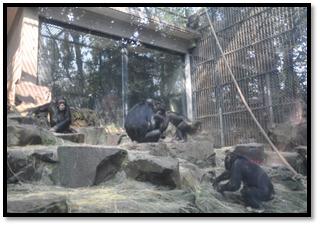 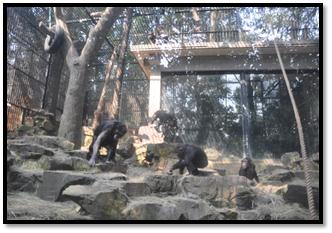
Follow
up
Mingming
was isolated by the baby chimps frequently. They were not
willing to play with her and the other big female did not
play with her very often either, which seemingly made her
frustrated. Despite all, her appetite was normal and
she had no problem getting to her diet.
Bobo
unfortunately passed away in the afternoon of 26th
of September. Post mortem examination revealed he had a
heart attack.
Several
meetings were held regarding the new exhibit’s
construction.
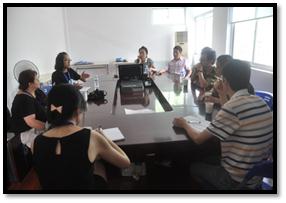 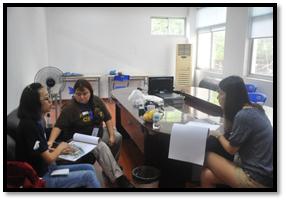
Some suggestions about
basic husbandry, enrichment and training techniques and
exhibit design were provided by the consultant.
Follow
up
The
accreditation standards and related policies of Association
of Zoos and Aquariums, the Chimpanzee (Pan troglodytes) Care
Manual of Association of Zoos and Aquariums and the South
African National Standards were provided and are being
translated to Chinese in collaboration with the Jane Goodall
Institute and Animalsasia.
Heated
floor
The
general assumption was the substrate cannot be provided on
heated floor due to being flammable. .
Suggestions:
All
animals can have substrate on heated floor. Another option
would be turning off the heat in one night house and provide
deep bedding for nest building while leaving the heat on in
the other and give the animals a choice.
Follow
up
Consultant
also confirmed with DR. Steve Ross, SSP coordinator
regarding substrate use on heated floor.
General
propositions:
Some
animals had very large exhibits but with rock or brick
flooring.
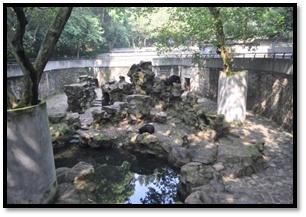 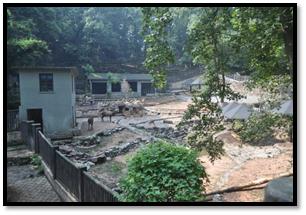
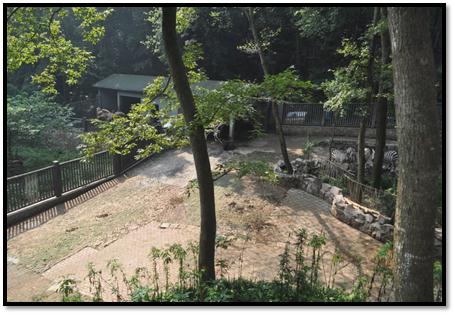
Suggestions:
The
floor should be broken up, allowing the animals to use
natural soil and to have regular vegetation to grow. Grass
can be planted as well. In South –East China the climate
is conducive to abundant vegetation so plants can be grown
in exhibits without irrigation.
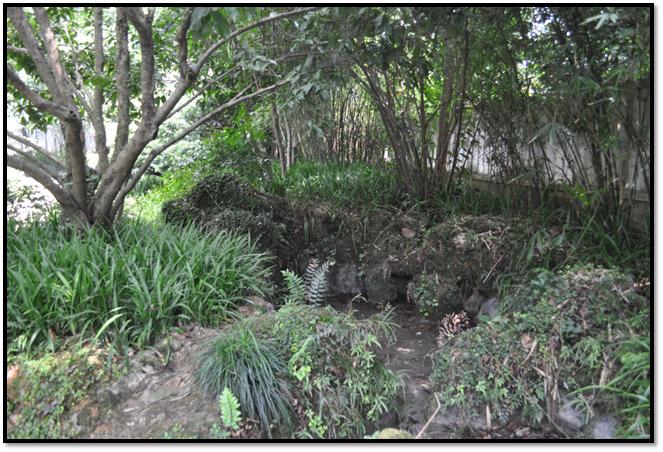
Night
houses, off exhibit areas and correct substrate use
Since
most animals lived in large exhibits and in proper social
groups, our focus was mostly on improving the “off exhibit”
areas where animals were isolated due to medical or
husbandry reasons or locked inside for longer periods of
time for any temporary housing reasons. Special attention
needs to be paid to all the night houses as well, where
animals spend an average 14-17 hours in concrete/bar cages.
Suggestions:
Continuing
to keep animals off of hard or cold, unyielding surfaces
(brick, concrete, etc.) would be desirable. The use of
appropriate substrate (inside- paper products, hay or straw,
etc.; outside- nonflammable materials such as grass, sand,
soil, mulch, fresh browse, etc.) will make a significant
difference not only in the animals’ health but also in
improvement of the exhibit aesthetics.
Browse
The
zoo has large amount of edible vegetation available on
grounds that could provide fresh, leafy branches (browse).
Suggestions:
Browse
should be provided at least every 2-3 days, but if possible,
every day. As mentioned during the presentation, the zoo can
start planting edible trees, bushes and even crops inside
and outside of exhibits, along visitor pathways and resting
areas that will provide future browsing materials for
growing collection demands. Whether cut by staff or
available by natural damage, fallen vegetation can be used
rather than wasted.
Extending
foraging time
All
animals need to be fed in a way that their foraging time is
extended and proper species-specific behaviors are
encouraged. If no one can be appointed for this position,
staff can be scheduled to cut browse and chop diet on a
rotation basis.
Education
The
following power point presentations were given to all staff:
·
Lack
of Substrate Use in Zoos addresses the easy fix of empty
cages and shows how much benefit there is in the animals’
lives when provided with substrate; i.e., when they do not
have to sit inside of empty concrete cages. This is probably
the most important animal welfare presentation to give out
of the five.
·
Contra-freeloading
at the Phoenix Zoo presentation talks about making animals
work for their food in similar ways as they would in the
wild instead of eating diet in short period of time from
metal dishes or rubber tubs.
·
Beneficial
Browse gives guidelines regarding how to develop a zoo-wide
browse program with numerous browse gardens in the middle of
the Sonoran Desert with no money; it also addresses the
major changes that fresh, leafy greens can make in the
animals’ lives.
·
Let
Them Be Elephants addresses the changes we made in our
elephants’ lives, how we helped their behaviors by
teaching them how to forage properly and behave like normal
females; it also talks about basic husbandry, enrichment
ideas and health care.
Presentations
are available at htresz@thephxzoo.com
I
would like to thank the Hangzhou Zoo’s directors and
staffs as well as the Chinese Association of Zoological
Gardens (CAZG) for their incredible hospitality, making me
feel so welcomed.
I
would also like to thank Animalsasia for funding and
organizing this trip and to establish such a wonderful,
working relationship between the Jane Goodall Institute, the
Phoenix Zoo and Hangzhou Zoo.
|




















